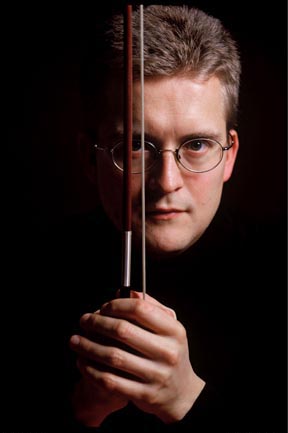Orchestra of St. Luke’s in Review
Orchestra of St. Luke’s in Review Christian Tetzlaff, Violinist and Leader Carnegie Hall; New York, NY October 28, 2010Christian Tetzlaff is a brilliant violinist with a scholarly mind and a passionate heart. His repertoire ranges from the baroque to the present, and he is equally at home in recitals, concertos and chamber music. In this concert, he demonstrated yet another facet of his versatility: as leader of an orchestra, both as concertmaster and soloist.
In the latter capacity, he presented Mozart’s Violin Concerto No. 3 in G major K.216 (1775), and the Carnegie Hall premiere of Sibelius’ Suite for Violin and Strings, Op. 11 (1929). Standing in the middle of the orchestra facing the audience and playing from the score (which he certainly did not need), he did not really conduct, for, to these infinitely adaptable, protean players, following him seemed second nature. In the Mozart, he joined the first violins in the tuttis; playing with his usual clarity, charm, and expressiveness, his tone was pristinely beautiful throughout. He reserved his virtuosity for his own cadenzas, though his facility tempted him to adopt record-breaking tempos. The three Sibelius pieces are pleasant miniatures with bucolic titles: “Country Scenery,” “Evening in Spring,” and “In the Summer.” The first two are calm and pastoral, but the third is a Perpetuum mobile, played here at a speed beyond human ears. (Why should the summer be in such a hurry?) The only cavil about Tetzlaff’s performances was visual, not musical: his playing is so natural and effortless that it is a pleasure to watch, but his knee-bends, dips and gyrations are enough to induce sea-sickness.
For the rest of the program, he sat in the first chair, which limited his mobility somewhat but not entirely, and since the members of this orchestra also like to indulge in a good deal of physical activity, the stage looked like a sea of swaying bodies.
Schoenberg’s “Verklärte Nacht” Op. 4, written for string sextet in 1899 and orchestrated in 1943, was inspired by a poem by Richard Dehmel. It depicts a man and a woman walking through a moonlit forest, her anguished confession that, yearning for motherhood, she conceived another’s child before she met him, and his understanding, reassuring response. Schoenberg captured the glittering moonlight, the dark, despairing beginning and the radiant, hopeful end, as well as the intense, fraught human emotions, with shimmering, surging, super-romantic music. Its lush sonorities are well served by the orchestral version, but its contrapuntal complexity is clearer in the sextet. Moreover, in the chamber version all parts are equal, while the orchestra’s violas and cellos have to be split in half, tilting the balance in favor of the violins, which are naturally divided into two sections.
Tetzlaff led a luxurious-sounding, emotionally concentrated performance, keeping things together with some big gestures and a bit of discreet time-beating. Haydn’s Symphony No. 80 in D minor(1784) was distinguished by the expressiveness of the Adagio, the grace of the Menuetto, and the hectic tempo of the Finale, which brought the house down.

